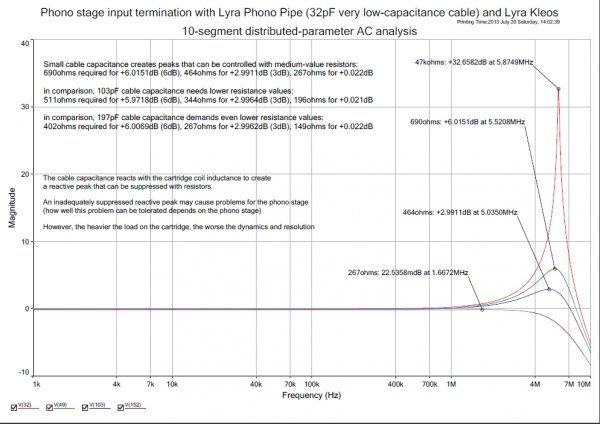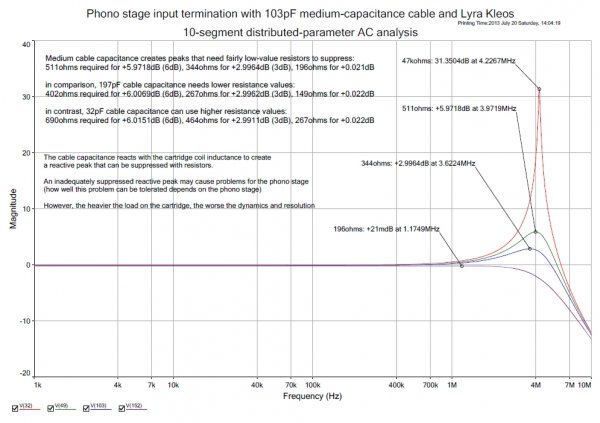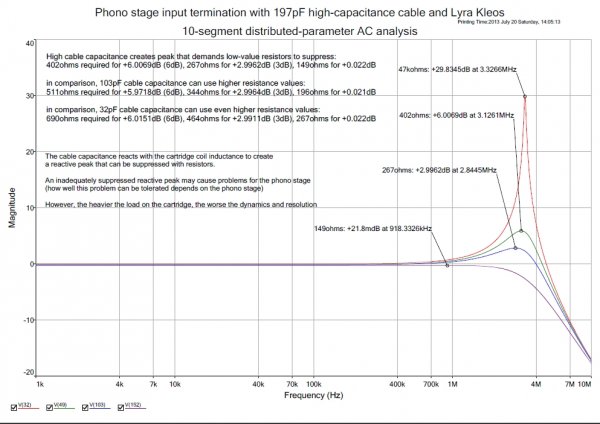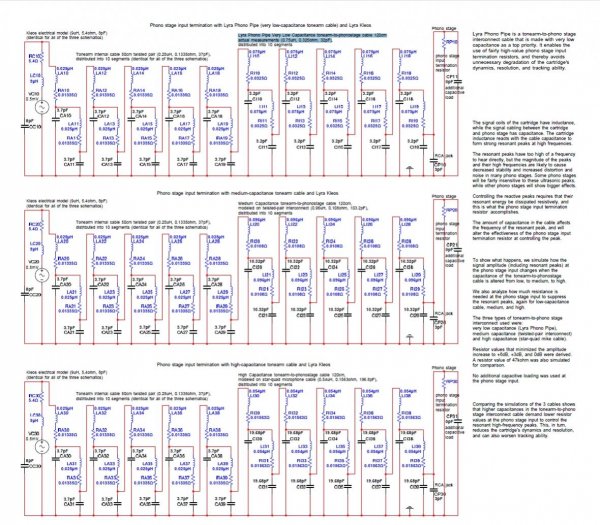Dear @intactaudio : Re-reading several posts here and in other forum about the loading issue I tend to agree with you. Please let me explain:
first JC works graphs here were not to prove nothing about IMD or frequency changes because MC loading.
That's why he posted that " FR changes is bogus " when he posted this to a forum member who asked about the FR effects of cartridge loading: brigth vs dark sound. Doing his thread answer ( JC ) made a comment about IMD but was only a comment to re-afirm/confirm that exist no FR changes because loading. A time comment and nothing more than that.
PM confirmed no FR chnages with cartridge loading and all these is the only true about cartridge loading and FR.
The JC advise is the lower cable capacitance the better.
@larryi pointed out:
" One position is that low loading is preferred because it CAUSES distortion that is perceived as high frequency information and people have grown accustomed to, and prefer, the distortion. "
According what you said PM posted:
" finally proposes that the excess IMD caused by a lightly loaded MC cart is often perceived as high frequency detail that many have grown accustomed to and the "dark" sound of heavily loaded cartridge can be due to a system being tuned for the typical lightly loaded case. "
@hagtech posted with no other significant comment:
"
reset the loading to 47K, buttoned things up and called the wife in for a listening session. Sure as heck both of us noticed the highs were crisper "
All those post coincide in that specific regards.
Now, I can remember that over 30 years now I almost always recomended to load highly the MC cartridges at around 100 ohms and doing what larry posted: move the volumen position to recover the SPL and with this simple " even SPL " the dark sound just gones and the sound will shines with lower distortion levels that at 20k-47k.
Today with your help of those PM works and the other gentlemans help I confirm that over the years my take about those 100 ohms loading is just rigth and as a fact that's the load impedance that I used and use with dozens of LOMC cartridges that I owned and own in my active high gain phonolinepreamp and when I'm using a SUT in my unit I set up the MM load at 100k. Everything works excellent.
Thank's to you all to share a critical information for me. Good !
R.
R.





